What Kind of Screws for Subfloor Installation are Best? (3 Choices)
Author: Omar Alonso | Editor: Omar Alonso
Review & Research: Jen Worst & Chris Miller
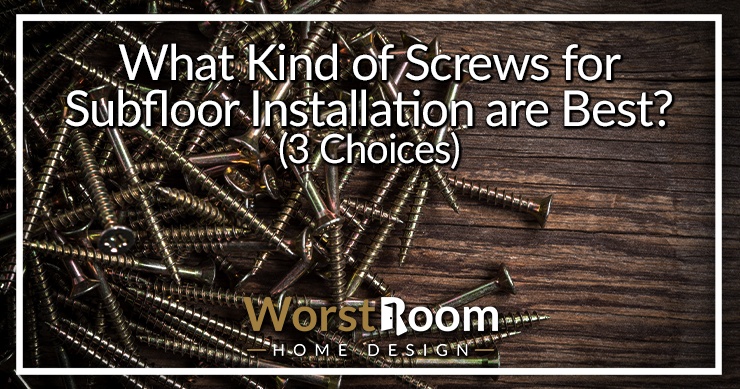
Tripping over squeaky floorboards is a common problem that can get on anyone's nerves. Why does it happen? It is often due to the use of incorrect or inferior screws for subfloor installations, a fact that many are unaware of, as well as a lack of glue.
This blog post will guide you through the essential knowledge of the different types of screws suitable for subfloors, their benefits, and installation tips - basically, everything you need to know for a stable, creak-free floor.
Curious yet? Read on to transform your floors from squeak-fests to silent sanctuaries!
Types of Screws for Subfloor Installations
What kind of screws for subfloors are most appropriate? Regarding subflooring, there are several types of screws to choose from. T-25 screws are popular for their strong grip and resistance to stripping, while self-drilling screws make installation easier.
Another option is subfloor collated screws, which offer speed and convenience for large projects.
T-25 Screws
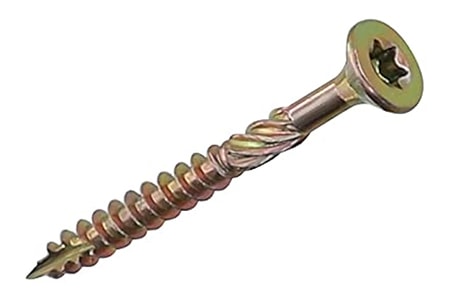
T-25 screws are the first choice for underfloor applications because of their custom design and rugged performance. With a unique 6-lobe, flat-head configuration, they provide superior grip and stability during installation.
Perfectly sized for all types of subfloors, these screws are available in various sizes, including 2" and 2-1/2". They blend seamlessly with high-quality substrates such as Advantech flooring products or sheathing materials.
Users praise T-25s for minimizing floor squeaks due to their exceptional holding capacity results achieved by driving them faster with approximately 25% less torque than alternative screws.
What's more? These yellow galvanized marvels from Simpson Strong-Tie are certified for underfloor installations and offer enhanced longevity that validates durability claims upfront - a testament reflected in glowing user testimonials based on first-hand experience with this bulk (1000 per box) available product.
Self-Drilling Screws
Self-drilling screws offer a unique advantage in underfloor installation. With their distinctive point design, they drill their own hole, eliminating the need for pre-drilled spaces. This makes them ideal for situations where you're working with wood or metal framing without pre-existing holes.
Each self-drilling screw serves a unique purpose due to body and head design variations that determine its specific application.
A well-chosen self-drilling screw will increase the stability and durability of your subfloor. These screws for subfloor installations come in various sizes and types, providing flexibility based on specific project needs.
Note that these screws are not interchangeable with self-tapping screws; each has its own applications. Choosing the right type of subfloor screws such as these will increase the success rate of any DIY flooring project.
Subfloor Collated Screws
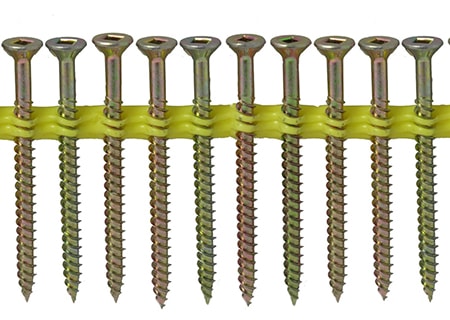
Subfloor collated screws stand out in subfloor installation for their efficiency and secure fastening. These screws are designed with a unique sharp point and lead thread to penetrate hardened material quickly without damaging it.
Installing your subfloor will be much faster with these screws, as they come in strips or coils that work seamlessly with screw guns or automatic feed systems. In particular, brands such as Grip-Rite offer high-quality collated subfloor screws known for their reliability during installation.
Secure your plywood subfloors effortlessly and efficiently with these innovative components - the epitome of craftsmanship meets technology! These are wonderful screws for plywood subfloor installation.
Benefits of Using Subfloor Screws
Subfloor screws offer several benefits to your flooring projects. They prevent squeaky floors by securely fastening subfloor materials together, providing a stable and secure foundation. These screws make installation easy, ensuring a hassle-free do-it-yourself experience.
Prevents Squeaky Floors
Squeaky floors can be both annoying and embarrassing. Fortunately, using Subfloor Screws is a simple yet effective solution to prevent these annoying noises. These specially designed screws help ensure that your subfloor is securely fastened to the floorboards above, minimizing movement and eliminating squeaks.
By properly screwing down the subfloor, you can eliminate the frustrating squeaks that occur when the flooring rubs against loose or improperly fastened boards. This means you can confidently walk across your floors without worrying about embarrassing noise disturbances.
Say goodbye to squeaky floors by using high-quality subfloor screws designed specifically for plywood subfloors.
Provides a Secure & Stable Subfloor
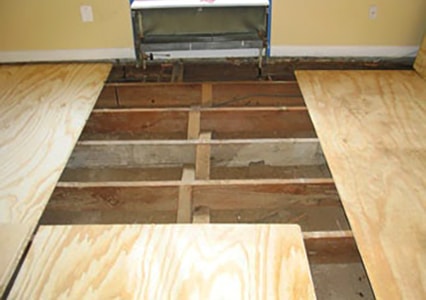
Using the right screws for your subfloor is critical to ensuring a secure and stable foundation for your flooring. Subfloor screws, such as galvanized screws, steel screws, and cement board screws, are specifically designed to provide maximum holding power (in the right materials. Don't opt for particle board subfloors).
These specialized screws for subfloor installations tightly grip the subfloor sheathing, creating a solid connection that prevents movement or shifting over time. This not only ensures a flat and even surface but also helps prevent common problems such as squeaky floors or gaps between boards.
By using high-quality subfloor screws during installation, you can rest assured that your subfloor will remain strong and durable for years.
Easy Installation
Installing subfloor screws is a breeze, making them an excellent choice for any do-it-yourselfer or professional contractor. With their user-friendly design, you can easily secure your subfloor quickly.
These screws are designed to provide a seamless installation process, allowing you to quickly and efficiently fasten the subfloor to the joists. This saves valuable time during construction projects and ensures your flooring project stays on schedule.
Whether you're fastening plywood or underlayment, Subfloor Screws provide a hassle-free solution for creating a stable and secure floor base. So get on with your subfloor installation with confidence!
Tips for Installing Subfloor Screws
To ensure a successful subfloor installation, always use the proper tools, such as a drill/driver with the appropriate bit for your screws. Remember to follow the manufacturer's guidelines and space the screws evenly for optimal stability. Want to learn more about installing subfloor screws like a pro? Keep reading!
Use the Correct Tools
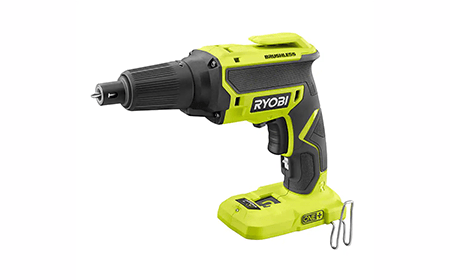
Using the right tools is critical to a successful subfloor installation. A power drill with a T-25 bit is essential for efficiently driving screws into the subfloor material. This is the case for any screws for subfloor installations.
In addition, a tape measure helps determine the spacing between screws and ensures even distribution along the joists. A stud finder can also be helpful in accurately locating the joists to provide a secure base for your subfloor.
Using the proper tools, you can streamline the installation process and achieve a strong, squeak-free subfloor that will provide long-lasting stability to your flooring system.
Follow Manufacturer Guidelines
To ensure a successful subfloor installation, follow the manufacturer's guidelines. These guidelines are designed to help you achieve a safe and stable subfloor that will last years.
Manufacturers often provide instructions on the type and size of screws and the spacing between them. Following these recommendations can prevent potential problems later, such as squeaky floors or structural instability.
Additionally, following the manufacturer's guidelines will ensure that your warranty remains valid, giving you peace of mind that your subfloor is installed correctly. Don't overlook this important step; it can make all the difference in achieving a professional and long-lasting result.
Ensure Even Screw Spacing
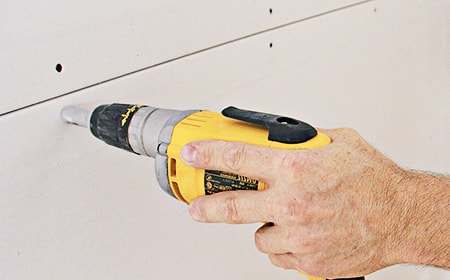
To ensure a safe and stable subfloor, maintain even spacing when installing screws. Proper spacing helps distribute the load evenly and prevents squeaky floors in the future.
Space your screws every 6-8 inches along the joists for optimal stability. This will help prevent any potential buckling or movement in your subfloor panels. By following this simple guideline, you can achieve a flat, stable floor foundation that will last years.
So be sure to take the time to measure and space your subfloor screws correctly - it'll make a big difference in the final result of your flooring project!
What Kind of Screws for Subfloors are Best?
What type of screws for subfloors are best? In conclusion, choosing the right screws for your subfloor is critical to ensuring a strong and squeak-free flooring foundation. T-25s, self-drilling screws, and subfloor collated screws are all excellent options.
Using these specialized screws, you can eliminate the annoying creaking floor problem and enjoy a safe and stable subfloor installation. Remember to follow the manufacturer's guidelines, use the proper tools and maintain even spacing during installation for the best results.
With proper screwing techniques and the right materials, you'll create a solid foundation that will stand the test of time. The right screws for subfloor installations make all the difference. Happy DIYing!



